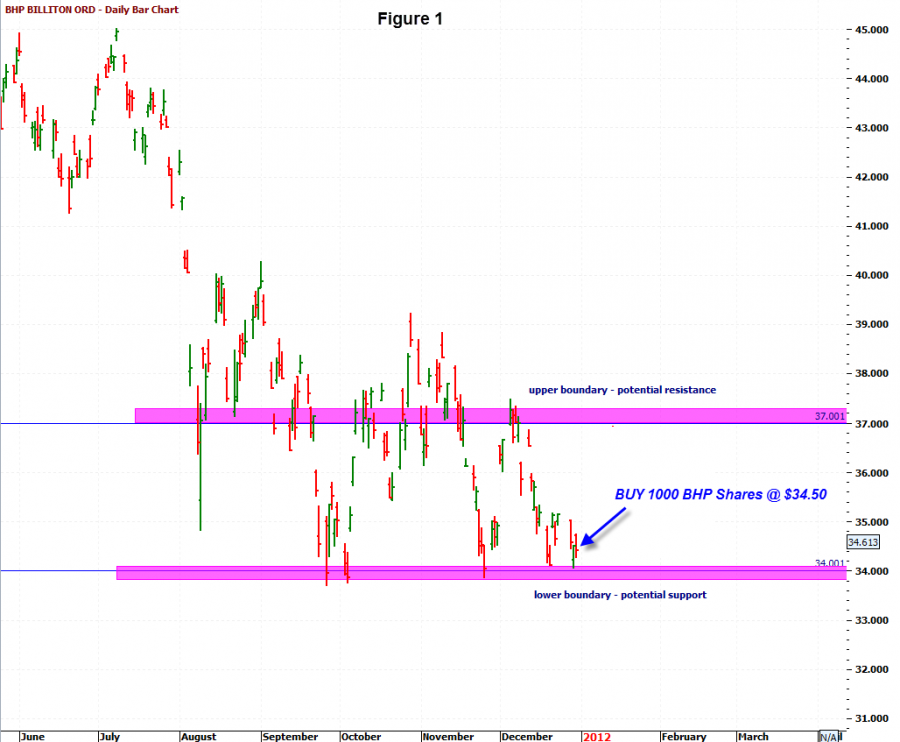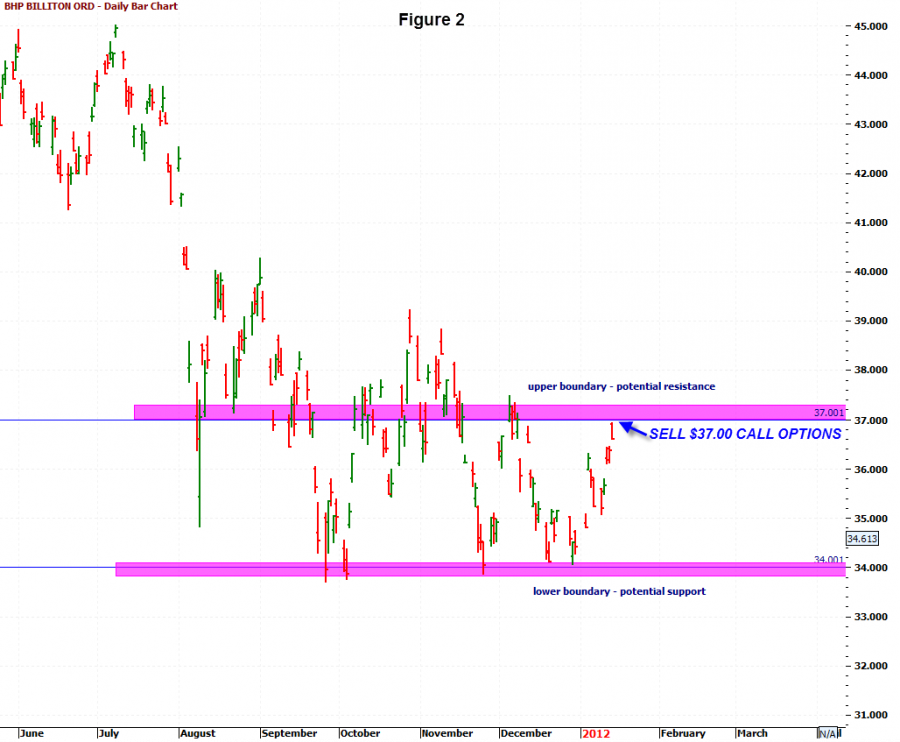Volatility in the financial markets is a fact of life. It’s important then for an investor to embrace the volatility and use it to their advantage, rather than shy away from the markets during volatile times. So is there a way to improve the returns from your portfolio while the market is choppy and range bound? The answer is YES.

With the Global investment markets currently caught up in a tug of war between the bulls (the optimists) and the bears (the pessimists) –there is a strong possibility that the markets will remain range-bound for some time yet. In markets like these, investors can extract even more income from their long term investments (than just earning dividends) by using a very effective investment strategy called “Covered Call Option Writing”.
This involves using your blue chip shares as collateral to generate additional income. As prices reach levels you feel are likely to be an upper price boundary, you offer to sell an at the money call option to someone that gives them the right to buy your shares at a price level that you choose (the strike price) and for a period of time that you choose (the expiry date). In return for this right to buy your shares at the agreed strike price and before the expiry day, the purchaser of your share option will pay you a premium which you keep as income!
As a seller of an option then has 2 ways of profiting from this strategy:
- PRICE (if the share price falls, the option will devalue)
- TIME (if the share price remains range bound, and below the strike price, the option will slowly devalue to zero at expiry)
The buyer of the option can only profit if the share price goes up quickly – and also significantly higher than the strike price. Our experience is that the option seller usually wins with this strategy – they get to keep their shares AND the option premium. Note: As the Option Seller however, you may buy back the sold call option and close your position and obligation to sell your shares at the strike price at any time (unless it is exercised before you do this!).
An example will demonstrate the strategy:
Figure 1 below shows a price chart of BHP – and that it is likely to be range-bound between $34.00 and $37.00 over the next 2 months. Our strategy is to buy BHP at $34.50 while it is close to the lower boundary of the range and then as it rallies to the upper boundary, we will sell call options over these shares.

Figure 2, over the next few weeks, BHP rallies to our upper boundary – at which point we SELL (Write) 10 BHP Call Options with a $37.00 strike price that expire in MARCH 2012 @ $1.50 cents per contract. We receive $1,500 in Option Premium Income from the sale as 1 contract is equivalent to 100 shares.

There are now 3 scenarios that can play out here by expiry of the option in March:
Scenario 1: BHP remains range-bound at expiry in March 2012: In the first scenario if BHP is still range bound, and below the strike price of $37.00, you keep the entire option premium ($1,500), and book a return of over 4.3%! You would then be free to write another option by doing the exact same thing again.
Scenario 2: BHP is higher than $37.00 at expiry in March 2012: In the second scenario assume that BHP is up sharply and has closed at $37.50 at expiry. You would be exercised on your $37.00 call option (in other words you would need to fulfill your obligation by selling your 1000 shares @ $37.00). This would be the equivalent of selling the shares at $38.50 – a profit of $2.50 per share AND you the option premium of $1.50 cents per share – a net profit of $4.00 per share (11.59% for less than 3 months!).
Scenario 3: BHP is lower than your original buy price at expiry
If at expiry, the share price is below your original entry price eg at $33.50, then you would be losing money on your share purchase ($1.00 per share) but you keep all the option premium ($1.50 cents per share or $1,500) – this gives you some downside protection (your breakeven becomes $33.00). Because you keep you shares, you are free to write another option for another month to again take in more premium income.
Conclusion:
Some key points to be aware of about the strategy are:
- Investment Risk is lowered as you are paid a premium that effectively reduces the entry cost for your shares therefore lowering your risk by the amount received.
- Your maximum profit is capped – so if the stock rises above your strike price (in the example $37.00) at expiry of the option then you will be obliged to sell your shares at that price.
- You keep the option premium – regardless of the outcome you will keep 100% of the premium that you received for writing the option.
- Options can be written regularly against your share holding
- Time is your ally – as the time decay of written options work in your favour when writing options particularly in the last month of expiry which can help give you an edge.
- Flexibility – at any time you can close your options and stock positions if you wish to. You don’t have to wait till expiry before doing so.
The Covered Call Option Writing strategy allows investor to get the best of both worlds: get all the benefits of share ownership (including capital appreciation and dividend income and franking credits where applicable) as well as a steady additional cash flow.
The result: significantly higher income yield on your shares – so you don’t have to rely on dividends alone!
Disclaimer:
All charts courtesy of Profitsource. This article contains general financial advice only and does not consider your personal circumstances; you should determine its suitability to you. Before acquiring a financial product you should consider the relevant product disclosure statement. Whilst the methods presented have worked in the past, there is no guarantee that they will continue to work as well in the future. Past performance is not a reliable indicator of future performance.


